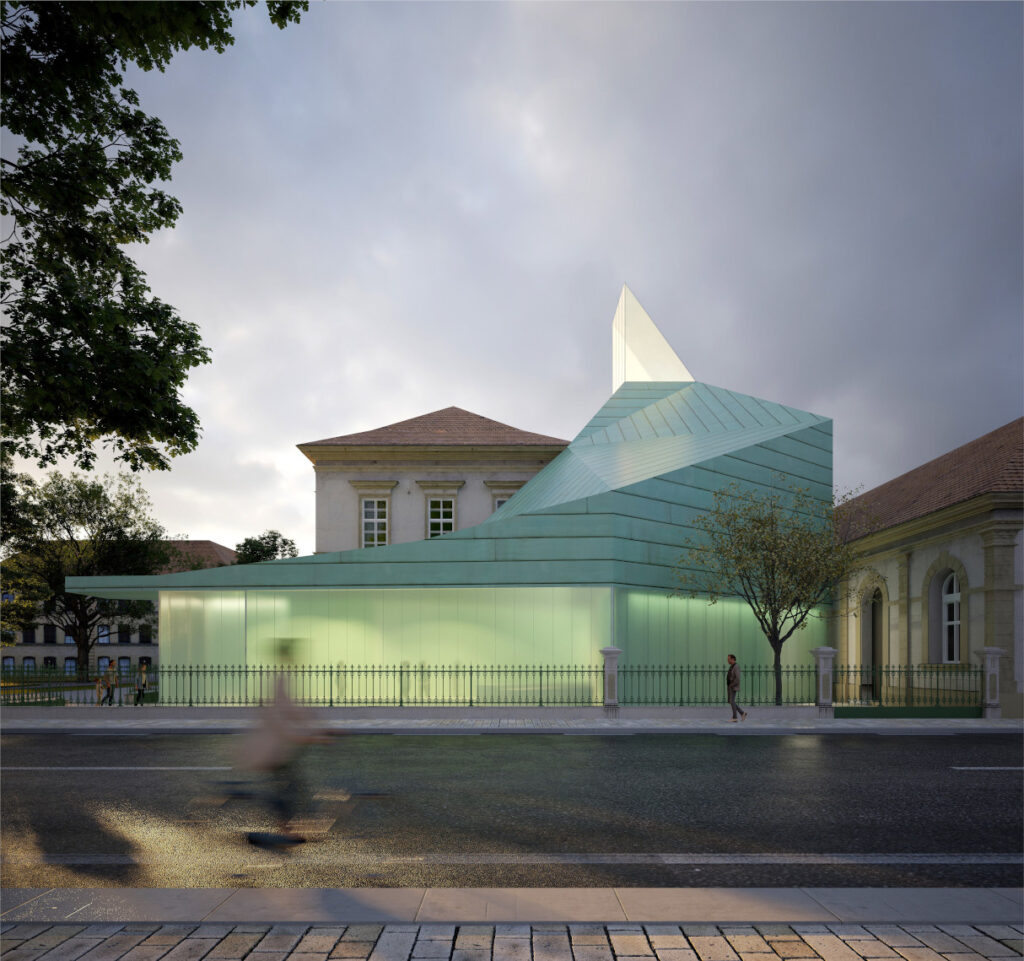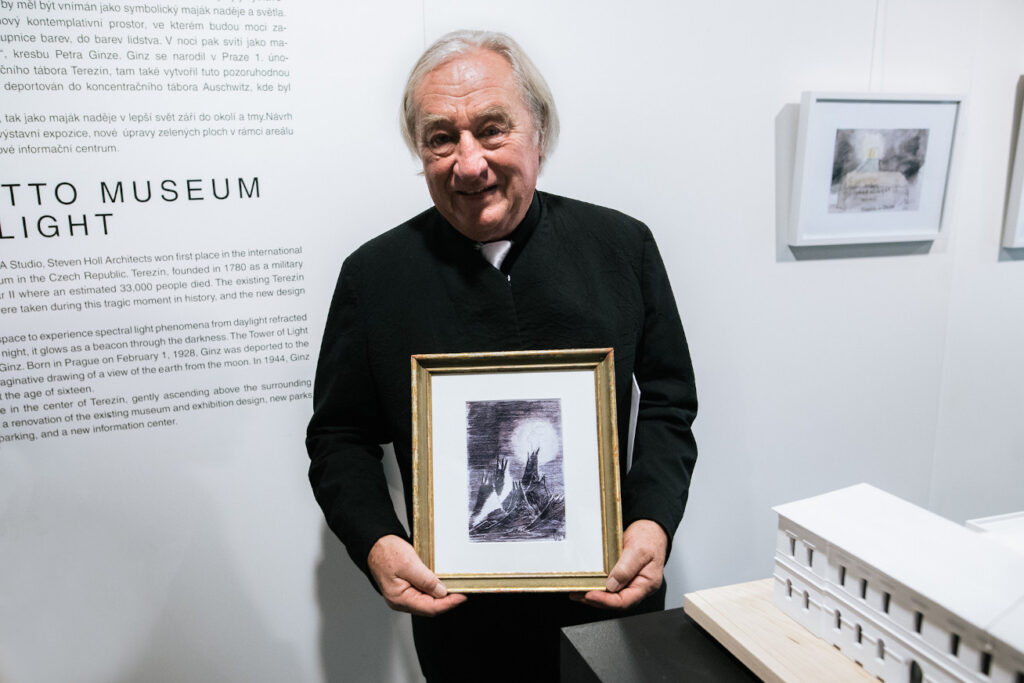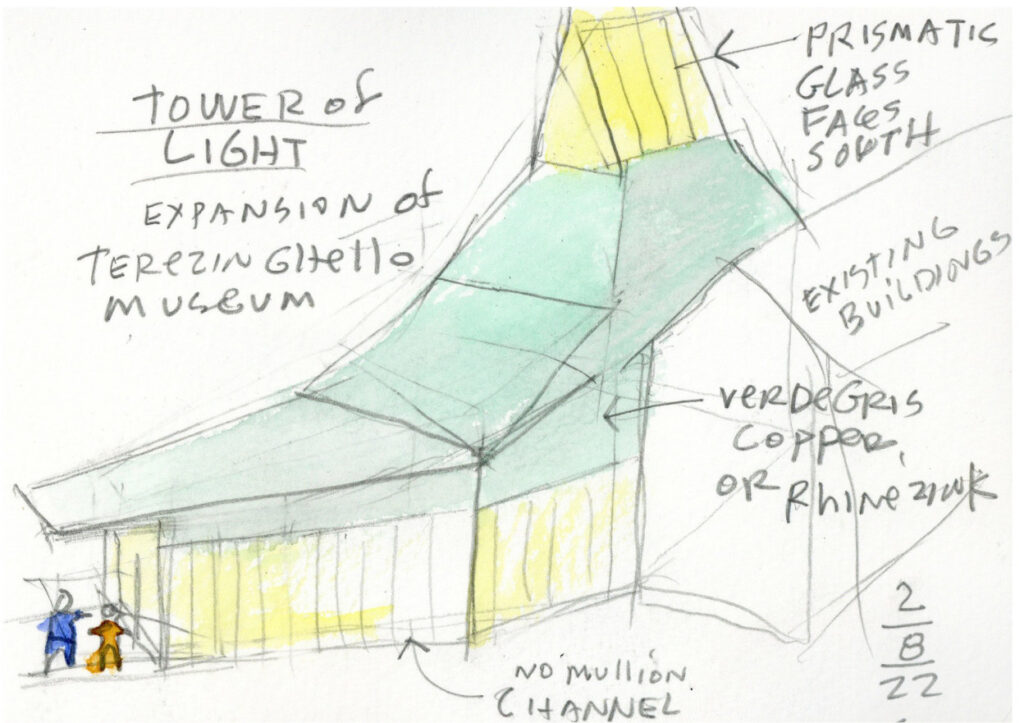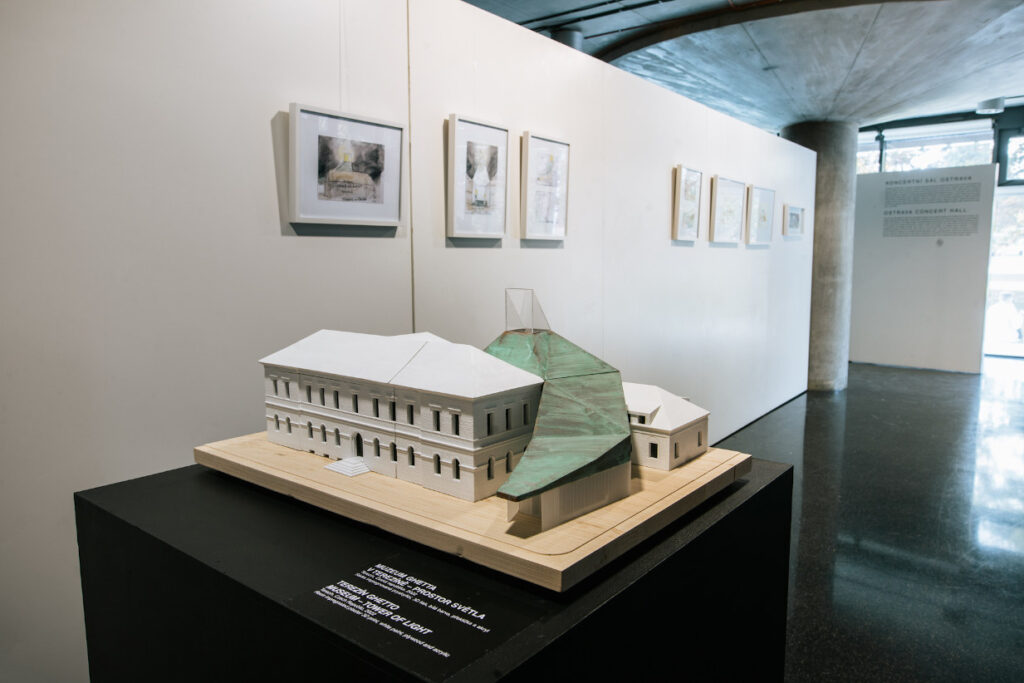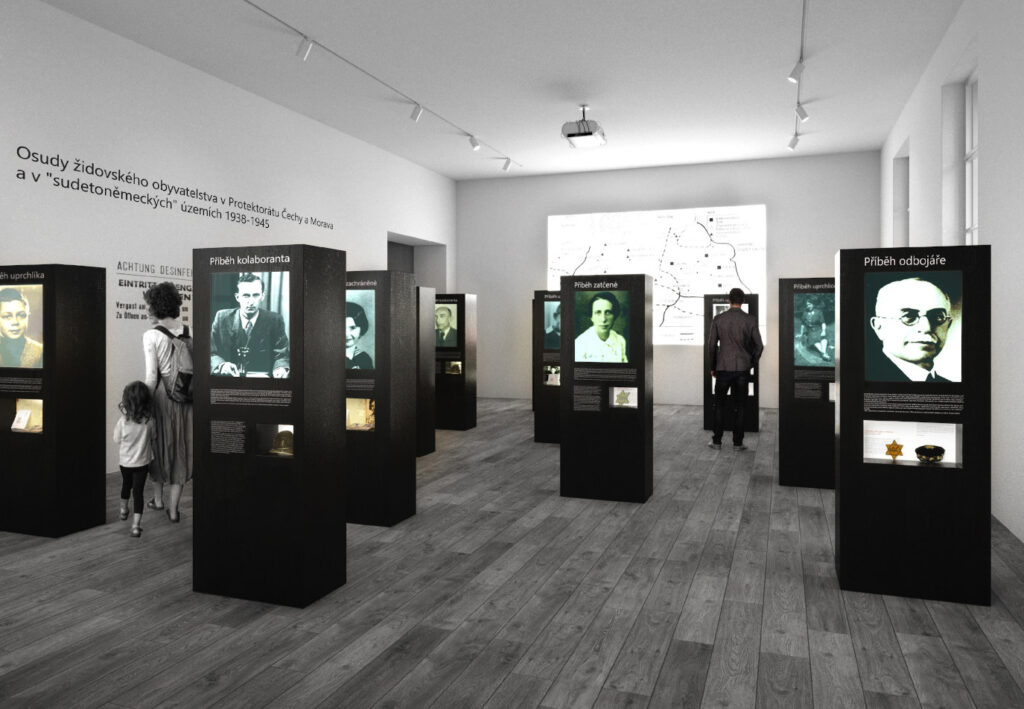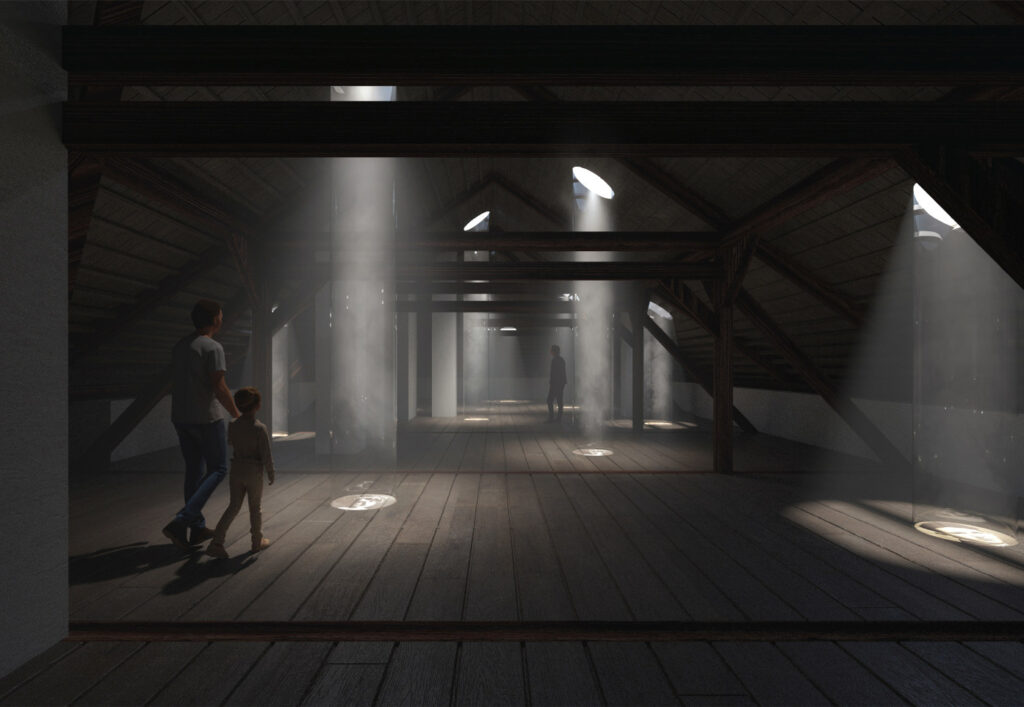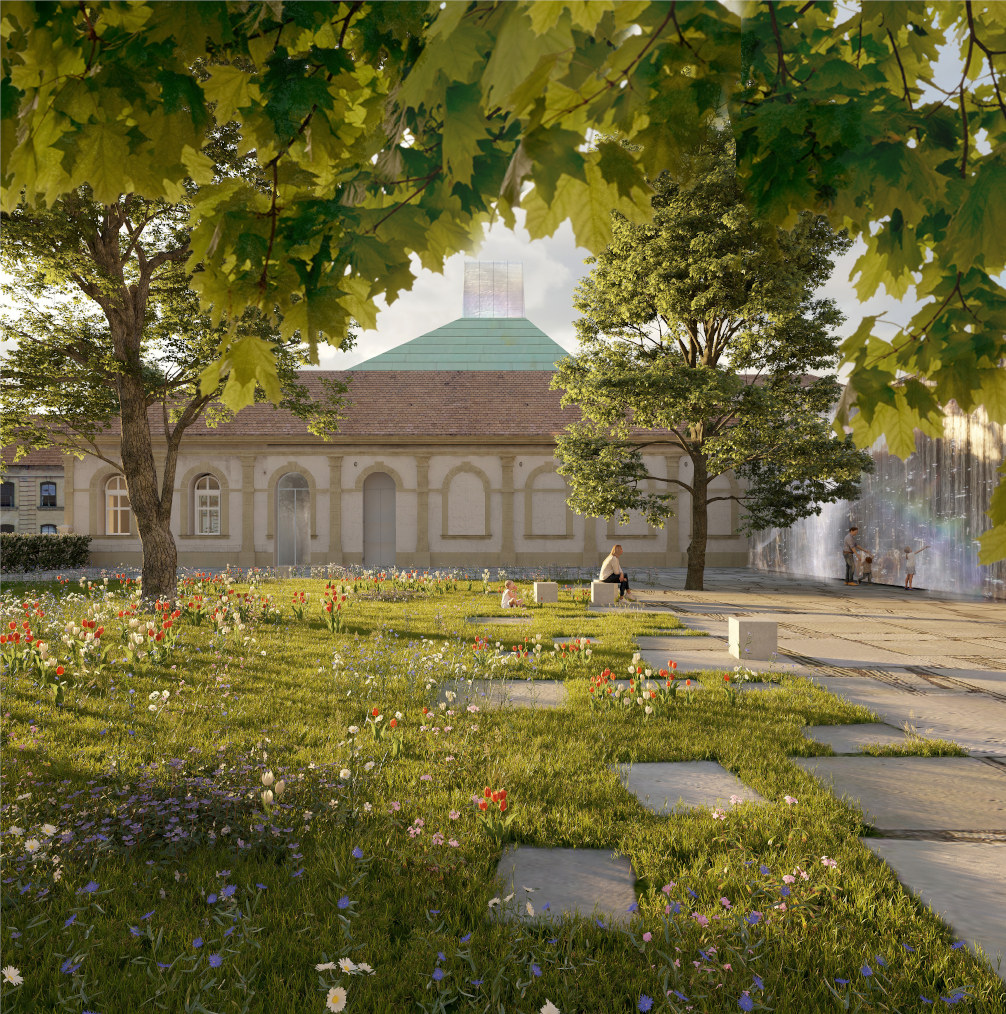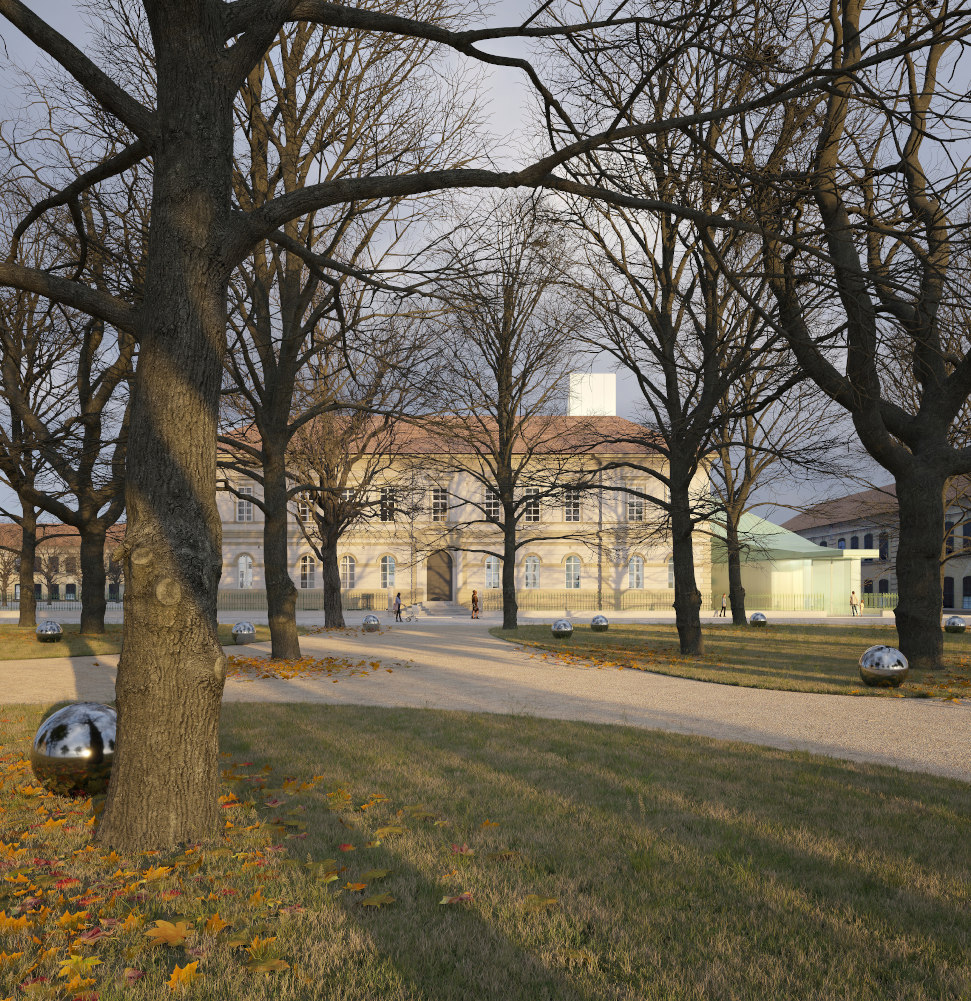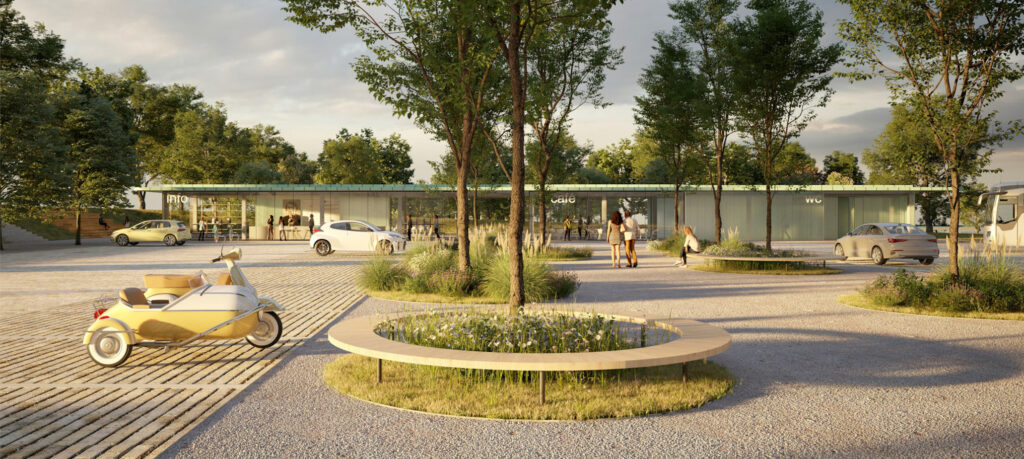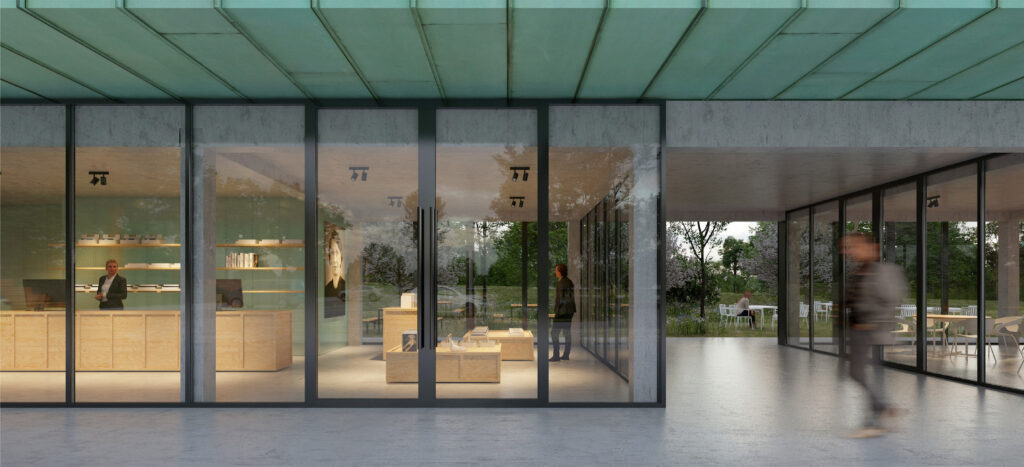The primary impulse for launching the project “Ghetto Museum Terezín” was the pressing need to renovate the exhibition in the Ghetto Museum, which – now after more than 20 years of its existence (installed in 2001) – no longer meets the contemporary trends in museum presentation. In addition to designing a new exhibition, the project included the requirement for a complete reconstruction of the entire object, functional solution of the Museum´s operation, revitalization and integration of its adjoining green areas (front garden and the Park of Terezín Children), design for the reconstruction of the Jirásek Parks situated near the Museum, and the concept of a new information center and of the Terezín Memorial´s main car park at the Small Fortress.
The architectural competition for the reconstruction of the “Ghetto Museum Terezín” was announced by the Terezín Memorial at the very end of 2021. Its principal objective was not only a design transforming the Ghetto Museum into a modern museum offering an attractive exposition and quality background for visitors together with the renovation of the adjacent parks, but also a solution for a new information centre and parking lot.
Out of the five shortlisted projects the professional jury unanimously selected the design presented by the SKUPINA (GROUP) studio led by Marcela Steinbachová who had invited the distinguished American architect Steven Holl to participate in the project. Their joint design proved to be the best solution for all the parts of the complex project assignment, excelling due to its high quality of architectural treatment. The jury was also highly impressed by the profound essence of ideas underlying the project. The shape of the modern extension with the unique Space of Light found its free inspiration in the life story of Petr Ginz and his exceptional drawing Moonscape. In a fascinating manner Petr had managed to depict his imaginary view from the Moon of the planet Earth that emanates light, as a symbol of hope.
The motivations and stimuli that led to the project´s final design were aptly summed up by Steven Holl himself in an interview for the weekly Téma (Theme) (November 4, 2022): “We thought how to design a project that would be not only practical, but would also symbolize an important message. Marcela Steinbachová showed me a drawing called “Moonscape” by a Jewish boy named Peter Ginz. It is an absolutely amazing work by a talented boy who was endowed with such vivid imagination; incidentally, he lived in the building now housing the Ghetto Museum during the war. He dreamt of exploring outer space and believed that one day people would succeed in landing on the Moon and see the Earth from a different perspective. Unfortunately, his dreams did not come true, he was deported to Auschwitz and murdered. … In 2003, Israeli astronaut Ilan Ramon took a copy of the drawing on the mission of the space shuttle Columbia. Regrettably, Ramon died during the shuttle´s return to Earth. In 2019, American astronaut Andrew Feustel visited the Ghetto Museum in Terezín and donated a copy of Ginz’s drawing, which he had carried with him in space, to accomplish Ilan Ramon’s mission in a symbolic way. Marcela and I thought that the Space of Light might be a good link between the past and the present. As an international symbol of tragedy and hope. For me, it is fascinating to think that through our project people will learn not only about Peter’s vision, but will also find out that his legacy lives on.”
The team around Marcela Steinbachová has also shown sensitivity and respect for the given theme when designing a new museum exhibition tracing the history of the Terezín Ghetto, the stories of its captive inhabitants as well as life in the Ghetto. The new exposition will make ample use of what are now quite common devices of audiovisual and interactive technology (screenings, overhead directional speakers, earphones, touch screens, video mapping, QR codes etc.), just as contemporary and state-of-the-art devices, such as hologram projections. Needless to add perhaps, the exhibition will feature impressive large-format photographs, mock-ups as well as a host of interesting exhibits. We are positive that we´ll succeed in completing the project “Ghetto Museum Terezín” within several years and that the new reconstructed Museum will welcome countless satisfied visitors.
Due to safety precautions the Ghetto Museum will be closed to the public throughout its reconstruction. During that time the Terezín Ghetto will offer visitors a temporary exhibition on the history of the Terezín Ghetto situated in the courtyard of the Magdeburg Barracks. The public will be informed well in advance of the date of the closure of the Museum and of the opening of the temporary exposition on the Terezín Memorial´s website.
Ivana Rapavá

